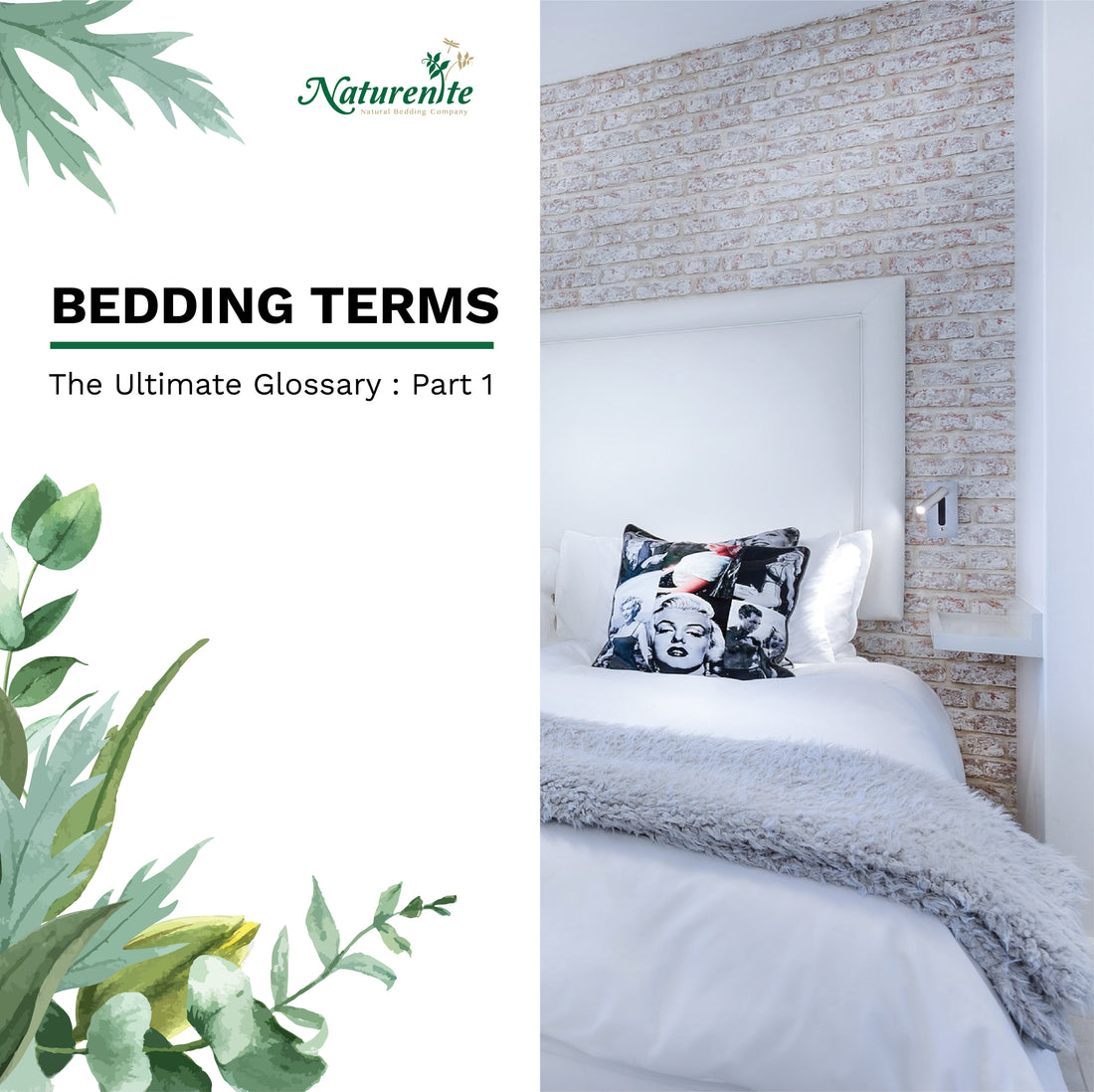
There’s no better way to put a new spin to your room than buying a new set of bedding. However, anyone who’s embarked upon this seemingly simple task will soon realize the problem – there are tons of new bedding terms out there. Deciding upon exactly what you want can be a daunting task; explaining what you want to the personnel at the store can be an even more daunting task. Thus, the reason we have put together today’s article: before you go bedding shopping, take a quick skim through the different kinds of bedding available at the store. Understand what each term means, and you will know exactly what you want to buy.
Without further ado: presenting the complete glossary of alphabetized bedding terms you will ever need.
A
Acrylic: A machine-washable and wrinkle-resistant synthetic fabric material. They don’t fade in the sunlight and are durable too; however, their softness can be less than cotton.
Appliqué: A needlework technique referring to pieces of fabric being stitched to a bigger background fabric, to create a design.
B
Bed skirt: A decorative piece of cloth used to cover the boxspring (see definition below) and the legs of the bed. It may also be called a dust ruffle.
Bedspreads: The final cover for the whole bed with sides that fall to the floor. This remains on top and is commonly what you and everyone will see.
Binding: Seams in material or unfinished edges can be covered with a narrow strip of cloth called a binding. Bindings can be of the same color as the original material (self-binding) or of a contrasting color, fabric, pattern, etc.
Bouclé: A type of woven or knitted fabric that is made with popular novelty yarn to create a rough, textured surface.

An example of bouclé texture.
Boxspring: A kind of bed base made of a sturdy wooden frame covered in cloth and consists of springs.
C
Chenille: A thick, soft, textured pile of fabric made from cotton, wool and even synthetic fabrics like rayon. Commonly used to make sweaters.
Comforter: A thick, fluffy blanket, covered in a duvet (see definition) and designed to keep you warm. It is filled with feathers or synthetic fiber filler and is stitched together to keep the filling in.
Comforter cover: This is known as a duvet. A comforter cover is a simple cotton shell that can come in a wide range of colors and patterns to give the comforter a good look. It has three closed sides and one open side (usually lined with buttons) through which you can insert the comforter.

Comforter cover in white.
Comforter set: A complete package set consisting of a comforter, bed skirt and two matching shams. A sham is like a false pillowcase which is used for decorative purposes. They match the duvet or the theme of the room and look pleasing to the eye.
Cotton: Our favorite material! A fluffy, lightweight, extremely soft material collected from the cotton plant and then woven into beautiful fabric. It is perfect for making bedding because of it’s soft texture and cool feel. Can be woven into limitless patterns and colors.
Cotton batting: Compressed cotton fiber that is used to fill in quilts.
Cotton-rich: Used to describe a type of fabric that is blended in with a high percentage of cotton to give it more of the material’s natural softness and breathability.
Coverlets: A smaller version of a bedspread that is used to cover the bedding. It is thin and light and is about the same size as a quilt. Coverlets are used for decorative purposes and can simply be used to hang down the sides of a bed to stop bed skirt or frame being exposed.
D
Damask: A jacquard-woven fabric that can be cotton, silk, wool, linen or even synthetic fibers that has an intricate pattern woven into it. Flowers, leaves, and animal designs are commonly embroidered onto the damask, with metallic threads being added for a special effect.

Damask pattern on a piece of fabric.
Down: A soft, fluffy substance collected from the underbellies of birds (usually geese or ducks) used to stuff pillows, comforters, and mattress toppers. Down is very lightweight and fluffy and is a great insulating material because of its ability to automatically contract to retain warmth. Always be sure to buy safe down from animal-friendly plucking practices.
Duvet: See comforter cover.
Read Part 2 here! Don't forget to subscribe to be the first to know and enjoy our exclusive offers!

